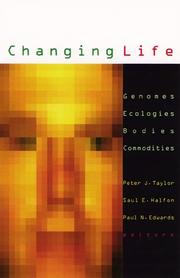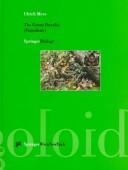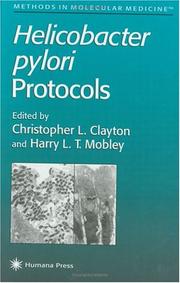| Listing 1 - 10 of 201 | << page >> |
Sort by
|

ISBN: 0070524300 Year: 1997 Publisher: New York (N.Y.) : McGraw-Hill,
Abstract | Keywords | Export | Availability | Bookmark
 Loading...
Loading...Choose an application
- Reference Manager
- EndNote
- RefWorks (Direct export to RefWorks)
Biology --- Life sciences --- Dictionaries.
Periodical
Abstract | Keywords | Export | Availability | Bookmark
 Loading...
Loading...Choose an application
- Reference Manager
- EndNote
- RefWorks (Direct export to RefWorks)
Life Sciences --- Biology

ISBN: 0816630127 Year: 1997 Publisher: Minneapolis Minnesota university press
Abstract | Keywords | Export | Availability | Bookmark
 Loading...
Loading...Choose an application
- Reference Manager
- EndNote
- RefWorks (Direct export to RefWorks)
Drawn from disciplines within science and technology studies and from geography, ecology, and developmental biology, the contributors offer a close look at how the mutable forms and concepts of life link the processes of science to those of information, finance, and commodities.
Life sciences --- Life sciences --- Political aspects --- Social aspects
Periodical
ISSN: 14317613 Year: 1997 Volume: 130,2011(3)
Abstract | Keywords | Export | Availability | Bookmark
 Loading...
Loading...Choose an application
- Reference Manager
- EndNote
- RefWorks (Direct export to RefWorks)
Biology --- Life sciences --- Biological Sciences --- Periodicals --- Arts and Humanities --- Life Sciences --- History
Periodical
Abstract | Keywords | Export | Availability | Bookmark
 Loading...
Loading...Choose an application
- Reference Manager
- EndNote
- RefWorks (Direct export to RefWorks)
Agriculture Sciences --- Health Sciences --- Life Sciences --- Veterinary Science --- Animal Physiology

ISBN: 3540618384 3642082769 3662033682 9783540618386 Year: 1997 Publisher: Berlin ; New York : Springer,
Abstract | Keywords | Export | Availability | Bookmark
 Loading...
Loading...Choose an application
- Reference Manager
- EndNote
- RefWorks (Direct export to RefWorks)
Over the past three decades, the philosophy of biology has emerged from the shadow of the philosophy of physics to become a respectable and thriving philosophical subdiscipline. In their book, the authors take a fresh look at the life sciences and their philosophy from a strictly realist and emergentist-naturalist perspective. They outline a unified and science-oriented philosophical framework that enables them to clarify many foundational and philosophical issues in biology. Thus, this book should be of interest to both life scientists and philosophers and is suitable as a textbook for courses at the advanced levels as well as for independent study.
Biology --- Philosophy. --- Life sciences. --- Medicine. --- Life Sciences, general. --- Biomedicine, general. --- Philosophy, general. --- Mental philosophy --- Humanities --- Health Workforce --- Biosciences --- Sciences, Life --- Science --- Vitalism --- Biology - Philosophy.

ISBN: 3709168546 3211829849 3211829830 Year: 1997 Publisher: Wien, Germany ; New York, New York : Springer,
Abstract | Keywords | Export | Availability | Bookmark
 Loading...
Loading...Choose an application
- Reference Manager
- EndNote
- RefWorks (Direct export to RefWorks)
Dr ULRICH MEVE'S book on Duvalia, one of the 30 genera comprising the group of stem-succulent Asclepiadaceae, is a piece of well-done research. The text is supported by excellent illustrations comprising full-page drawings and photo graphs making this monograph a very practicable contribution for both profes sional and amateur botanists. Dr MEVE'S species delimitations are mainly based on morphological, karyological and biogeographical studies, and therefore easy to follow. His taxonomic and well-established biogeographic conclusions have been supported by field observations in southern and eastern Africa. Without doubt, this book represents one of the best and most intensive monographs ever published for the Asclepiadaceae. The studies of Dr MEVE were initiated at my former chair of systematic botany in Kiel, the former work place of the renowned succulent plants specialist Dr H. JACOBSEN and the karyologist Prof. G. REEsE. Dr MEVE has been involved with Asclepiadaceae research for more than ten years, and his work is characterized by a meticulousness typical of him. He has made himself a name amongst colleagues as well as plant lovers by his remarkable number of scientific and popular publications, which are not restricted to succulent Asclepiadaceae.
Life sciences. --- Plant science. --- Botany. --- Life Sciences. --- Plant Sciences. --- Duvalia --- Botanical science --- Phytobiology --- Phytography --- Phytology --- Plant biology --- Plant science --- Biology --- Natural history --- Plants --- Floristic botany --- Asclepiadaceae

ISBN: 0896033813 1592595928 Year: 1997 Publisher: Totowa, NJ : Humana Press : Imprint: Humana,
Abstract | Keywords | Export | Availability | Bookmark
 Loading...
Loading...Choose an application
- Reference Manager
- EndNote
- RefWorks (Direct export to RefWorks)
In Helicobacter pylori Protocols, leading experts bring together an outstanding collection state-of-the-art protocols for the identification and molecular manipulation of H. pylori. The authoritative contributors supply detailed and readily reproducible protocols for culturing H. pylori, for the isolation and restriction endonuclease digestion of H. pylori chromosomal DNA, and for the transformation and insertional mutagenesis of H. pylori. They also provide molecular epidemiological techniques, including ribotyping, PCR-RFLP, and RAPD-PCR. These procedures have been developed to solve the difficult technical problems created by the application of today's powerful bacterial genetic and molecular cloning techniques to H. pylori. Helicobacter pylori Protocols contains a wide variety of stand-alone techniques that are unfailingly reproducible. The book is certain to become a standard experimental and clinical laboratory reference for all those engaged in H. pylori work today.
Helicobacter pylori --- Life sciences. --- Biochemistry. --- Life Sciences. --- Biochemistry, general. --- Biological chemistry --- Chemical composition of organisms --- Organisms --- Physiological chemistry --- Biology --- Chemistry --- Medical sciences --- Biosciences --- Sciences, Life --- Science --- Composition

ISBN: 0585352283 0412607808 Year: 1997 Publisher: London, England : Chapman & Hall,
Abstract | Keywords | Export | Availability | Bookmark
 Loading...
Loading...Choose an application
- Reference Manager
- EndNote
- RefWorks (Direct export to RefWorks)
This book has been written to provide research workers with an introd- tion to several optical techniques for new applications. It is intended to be comprehensible to people from a wide range of backgrounds - no prior optical or physics knowledge has been assumed. However, sufficient technical details have been included to enable the reader to understand the basics of the techniques and to be able to read further from the ref- ences if necessary. The book should be as useful to postgraduate students and experienced researchers as those entering the bioengineering field, irrespective of whether they have a technical or clinical background. It has been prepared with an awareness of the inherent difficulties in und- standing aspects of optics which, in the past, have precluded practical application. The contents address a broad range of optical measurement techniques which have been used in biomechanics, techniques characterized as n- contacting and non-destructive. Theoretical outlines and practical advice on gaining entry to the fields of expertise are complemented by biomec- nical case studies and key literature references. The aim is to present each technique, to appraise its advantages and capabilities and thereby to allow informed selection of an appropriate method for a particular app- cation. It is anticipated that research workers will be assisted in est- lishing new methodologies and gain first-hand experience of the techniques.
Biomechanics --- Optical measurements. --- Measurement. --- Surfaces (Physics). --- Life sciences. --- Characterization and Evaluation of Materials. --- Life Sciences, general. --- Materials science. --- Biosciences --- Sciences, Life --- Science --- Material science --- Physical sciences --- Physical measurements
Book
ISBN: 1280836741 9786610836741 1592595537 0896034836 Year: 1997 Publisher: Totowa, NJ : Humana Press : Imprint: Humana Press,
Abstract | Keywords | Export | Availability | Bookmark
 Loading...
Loading...Choose an application
- Reference Manager
- EndNote
- RefWorks (Direct export to RefWorks)
The advent of PCR, with its power to amplify tiny amounts of DNA, quickly spawned the development of many analytical procedures that are widely used for detection, measurement, and characterization. However, creative investigators soon discovered the power of PCR for synthetic or preparative uses. This volume focuses on such preparative PCR protocols, which can be used in the cloning and modification of DNA. PCR Cloning Protocols: From Molecular Cloning to Genetic Engineer ing is divided into seven parts, each containing a collection of chapters address ing a general approach or goal. Part I presents basic PCR protocols, emphasizing optimizing conditions for (he amplification of DNA fragments of several kilobases in length. Part 11 offers several procedures for cloning PCR prod ucts, depending on whether a specific restriction site can be used in the clon ing vector, the PCR product is to be gel purified before cloning, or the fragmeni needs to be inserted in one or both orientations. Part III includes several pro tocols involved in the mutagenesis of DNA, either site-directed or not, as well as several approaches to recombinant PCR, either for mutagenesis or building a custom gene, as well as one chapter describing a specific use of in vitro selection. Part IV addresses the frequent need to amplify and clone segments of DNA that are to the right, left, or scattered within a stretch of DNA (either vector, chromosomal, or cDNA) of known sequence.
Life sciences. --- Biochemistry. --- Life Sciences. --- Biochemistry, general. --- Biological chemistry --- Chemical composition of organisms --- Organisms --- Physiological chemistry --- Biology --- Chemistry --- Medical sciences --- Biosciences --- Sciences, Life --- Science --- Composition
| Listing 1 - 10 of 201 | << page >> |
Sort by
|

 Search
Search Feedback
Feedback About
About Help
Help News
News